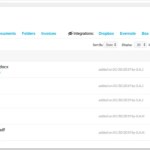Software license compliance: 9 best practices you must know
Ensuring software license compliance is essential for avoiding legal penalties and maintaining a positive organizational reputation. Here are nine best practices to follow for effective software license compliance:
1. Understand the Licensing Terms and Conditions
- Grasp the Rights and Responsibilities: Fully understand the rights and responsibilities outlined in the software license agreements. This includes knowing how, where, and by whom the software can be used.
- Penalties for Non-Compliance: Be aware of the potential penalties for non-compliance to avoid legal and financial repercussions.
2. Optimize Software License Utilization
- Maximize ROI: Ensure that all purchased licenses are being utilized efficiently. Unused licenses represent wasted investment and poor license management.
- Usage Monitoring: Regularly monitor software usage to identify underutilized licenses and reallocate or terminate them as necessary.
3. Maintain Comprehensive Records
- Accurate Inventory: Keep detailed records of all software licenses, including purchase dates, renewal dates, and terms of use. This helps in tracking and managing licenses effectively.
- Centralized Repository: Use a centralized repository for storing all license-related documentation to facilitate easy access and management.

Software license compliance
4. Conduct Regular Internal Audits
- Frequent Checks: Perform regular internal audits to ensure compliance with the terms and conditions of software licenses. This helps identify any discrepancies early.
- Preparation for External Audits: Regular internal audits prepare the organization for potential external audits, ensuring that compliance issues are addressed proactively.
5. Educate Employees
- Training Sessions: Conduct regular training sessions, workshops, and webinars to educate employees about software license compliance best practices.
- Update on Changes: Keep employees informed about any updates or changes in the licensing terms and conditions to ensure ongoing compliance.
6. Set Up a Dedicated Compliance Team
- Specialized Team: Establish a dedicated team responsible for overseeing software license compliance. This team can handle interpretation of licensing terms, supervise license management, and conduct training and audits.
- Cross-Functional Communication: Ensure the compliance team communicates effectively with other departments to align everyone on compliance objectives.
7. Use License Management Software
- Automation Tools: Utilize software tools designed for license management to automate tracking, monitoring, and reporting on software usage and compliance.
- Real-Time Monitoring: Implement real-time monitoring solutions to quickly identify and rectify any compliance issues.
8. Implement a License Compliance Policy
- Formal Policy: Develop a formal policy outlining the organization’s approach to software license compliance, including procedures for acquisition, usage, and monitoring.
- Policy Enforcement: Ensure strict adherence to the policy through regular checks and disciplinary measures for non-compliance.
9. Stay Updated on Licensing Trends
- Industry Knowledge: Keep abreast of the latest trends and changes in software licensing practices and terms. This includes staying informed about new licensing models and compliance requirements.
- Vendor Relationships: Maintain good relationships with software vendors to receive timely updates on any changes to licensing terms and conditions.
By following these best practices, organizations can significantly reduce the risk of non-compliance, optimize the use of their software investments, and maintain a positive reputation. Regular internal audits, employee education, and the use of specialized compliance tools are crucial components of an effective software license management strategy.


